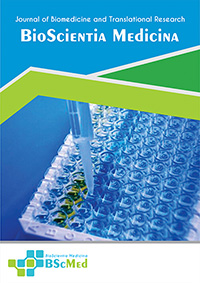Main Article Content
Abstract
Background: Inhalation injury significantly increases morbidity and mortality in burn patients, primarily through airway obstruction, inflammation, and impaired gas exchange. Nebulized heparin has been investigated as a potential therapy to counteract local pulmonary coagulopathy and fibrin cast formation. However, evidence regarding its clinical efficacy and safety remains conflicting. This systematic review and meta-analysis aimed to synthesize updated evidence on the efficacy and safety outcomes of nebulized heparin in burn patients with inhalation injury.
Methods: A systematic literature search was conducted in PubMed, EMBASE, Cochrane Library, and Web of Science for studies published between January 2014 and December 2024. We included randomized controlled trials (RCTs) and comparative cohort studies evaluating nebulized heparin versus placebo or standard care in adult and pediatric burn patients with inhalation injury. Primary efficacy outcomes included mortality and ventilator-free days (VFDs) at 28 days. Secondary outcomes included duration of mechanical ventilation (DoMV), hospital length of stay (LOS), changes in PaO2/FiO2 ratio, incidence of pneumonia, and safety outcomes (bleeding events). Data were synthesized, and a random-effects meta-analysis was planned to estimate pooled effect sizes (Risk Ratios [RR] or Standardized Mean Differences [SMD]). Study quality was assessed using appropriate tools.
Results: The search strategy yielded seven studies (3 RCTs, 4 cohort studies) meeting the inclusion criteria, encompassing a total of 950 patients. Study quality varied. The meta-analysis suggested a potential reduction in mortality associated with nebulized heparin compared to control groups (Risk Ratio [RR]: 0.79; 95% CI: 0.64-0.97, P=0.02; I²=45%). A trend towards increased VFDs (Standardized Mean Difference [SMD]: 0.35; 95% CI: -0.05 to 0.75, P=0.08; I²=60%) and reduced DoMV (SMD: -0.50; 95% CI: -0.85 to -0.15, P=0.005; I²=55%) was observed. Effects on hospital LOS and PaO2/FiO2 ratio were less consistent across studies. There was no significant difference in the incidence of pneumonia (RR: 0.95; 95% CI: 0.80-1.13, P=0.55; I²=20%). Safety analysis indicated no significant increase in major bleeding events (RR: 1.15; 95% CI: 0.88-1.50, P=0.30; I²=10%), although minor bleeding, like blood-stained sputum, was noted in some studies. Substantial heterogeneity was present for some outcomes.
Conclusion: Based on this updated systematic review and meta-analysis, nebulized heparin may be associated with reduced mortality and duration of mechanical ventilation in burn patients with inhalation injury, without a significantly increased risk of major bleeding. However, considerable uncertainty remains due to study heterogeneity and methodological limitations in the available literature. Its effect on pneumonia incidence appears negligible. Large-scale, high-quality RCTs are still needed to confirm these findings and establish optimal treatment protocols.
Keywords
Article Details
As our aim is to disseminate original research article, hence the publishing right is a necessary one. The publishing right is needed in order to reach the agreement between the author and publisher. As the journal is fully open access, the authors will sign an exclusive license agreement.
The authors have the right to:
- Share their article in the same ways permitted to third parties under the relevant user license.
- Retain copyright, patent, trademark and other intellectual property rights including research data.
- Proper attribution and credit for the published work.
For the open access article, the publisher is granted to the following right.
- The non-exclusive right to publish the article and grant right to others.
- For the published article, the publisher applied for the Creative Commons Attribution-NonCommercial-ShareAlike 4.0 International License.





